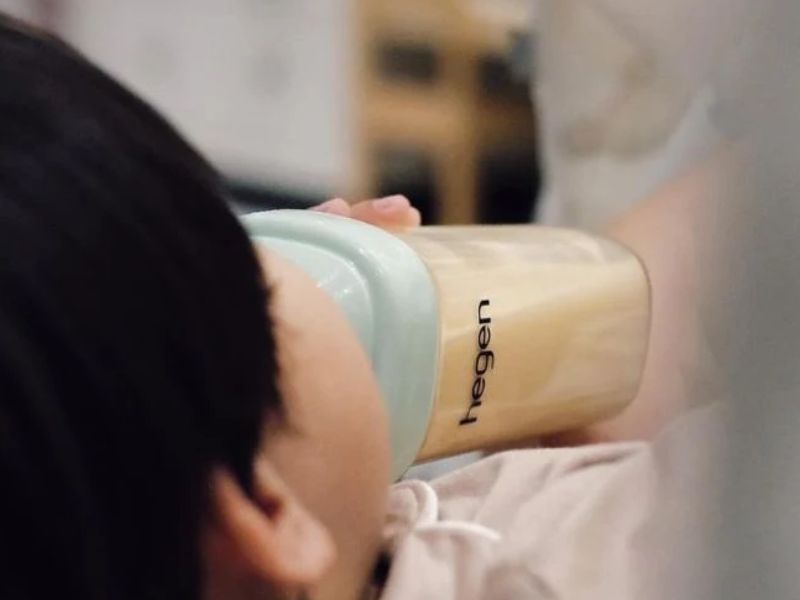Mom, have you ever wondered that the numbers on the bottom of your baby’s bottle carry important meaning? Many parents don’t realize that safe baby bottle codes are key to keeping your little one free from harmful chemicals. These numbers aren’t just decorative—they indicate the type of plastic used.
Often, we focus on the bottle’s shape or brand without considering the material. Yet, the wrong plastic can release harmful substances when the bottle is heated, such as during boiling or sterilization. That’s why understanding plastic codes is crucial to providing the safest option for your baby’s health.
This article will help you understand what the codes on baby bottles mean, identify safe materials, and offer practical tips for choosing bottles with guaranteed quality. With this knowledge, you can feel confident every time your baby drinks milk.
What Are Baby Bottle Codes?
At the bottom of a baby bottle, there is usually a triangle symbol with a number from 1 to 7. This symbol is known as the Resin Identification Code (RIC), which identifies the type of plastic used.
Not all plastics are safe when exposed to high temperatures, such as during sterilization or heating. Some plastics can even release harmful substances into the milk. By understanding these codes, parents can ensure they choose only bottles made from safe materials for their little one.
Types of Plastic Codes on Baby Bottles and Their Safety

Source: mungfali.com
Each number in the triangle symbol represents a different type of plastic. Here’s a detailed explanation to help parents understand:
-
Code 1 (PET or PETE): Made from Polyethylene Terephthalate. Lightweight and clear, commonly used for single-use water bottles. Not designed for heating and not recommended for baby bottles.
-
Code 2 (HDPE): High-Density Polyethylene is chemically resistant and fairly strong, but usually opaque and rarely used for baby bottles. Not ideal due to limited heat resistance.
-
Code 3 (PVC): Polyvinyl Chloride contains harmful chemicals that can leach into milk, making it unsafe for babies.
-
Code 4 (LDPE): Low-Density Polyethylene is flexible but not heat-resistant. Not recommended for baby bottles.
-
Code 5 (PP – Polypropylene): Lightweight, relatively heat-resistant, and widely used for baby bottles. Safe for babies, though it may become cloudy over time.
-
Code 6 (PS – Polystyrene): Brittle and can release styrene, a potentially harmful chemical. Unsafe for baby bottles.
-
Code 7 (OTHER): This category includes various materials like Tritan, PES, and PPSU. Some, especially PPSU, are very safe and recommended for premium baby bottles.
Among all codes, the best choices for baby bottles are Code 5 (PP) or Code 7 with materials like PPSU, which meet higher safety standards.
What Is PPSU and Why Is It Safe for Babies?
PPSU, or Polyphenylsulfone, is a premium plastic categorized under Code 7. Unlike other plastics, PPSU offers numerous advantages that make it safe and ideal for baby bottles.
First, PPSU is BPA-free, eliminating concerns about hormone-disrupting chemicals. Second, it is highly heat-resistant, withstanding temperatures up to 180–200°C, allowing parents to boil or sterilize bottles without worrying about deformation or harmful chemical release. Third, PPSU is resistant to color changes, warping, and odor absorption, keeping bottles clear and hygienic even with frequent use.
With these benefits, PPSU bottles are long-lasting, making them an excellent investment for parents seeking high-quality feeding equipment.
Differences Between PP, PES, and PPSU in Baby Bottles

Source: Hegen
To help parents understand, here’s a breakdown of three popular baby bottle materials:
-
PP (Polypropylene): Usually milky white, withstands temperatures up to 100–110°C. Lightweight and affordable, but can become cloudy over time and is less durable than premium materials.
-
PES (Polyethersulfone): Clear yellow, heat-resistant up to about 180°C, and clearer than PP. Fairly durable, though not as strong as PPSU, with a mid-range price.
-
PPSU (Polyphenylsulfone): Golden yellow, withstands 180–200°C. Extremely strong, odor-resistant, and long-lasting, making it the most premium choice.
Among these materials, PPSU stands out for its exceptional durability and ability to remain clear even with long-term use.
Also read: Using Nipples to Prevent Nipple Confusion in Babies & Other Tips
Tips for Choosing Baby Bottles Based on Code and Material
To avoid choosing the wrong bottle, parents can follow these guidelines:
-
Check the plastic code usually found at the bottom of the bottle. Ensure the code is clear and legible.
-
Choose at least Code 5 (PP), but for the best quality and long-term safety, Code 7 made from PPSU is highly recommended.
-
Avoid bottles without material labels or with faded symbols. Bottles lacking clear information may not meet safety standards.
-
Ensure the bottle is BPA-free, food-grade, and heat-resistant for safe sterilization.
By following these steps, parents can ensure every drop of milk comes from a safe, reliable bottle.
Hegen Baby Bottles Are Worth Considering!

Source: Hegen
If you want to ensure your little one’s safety and comfort, Hegen baby bottles are an excellent choice. Here are their key advantages:
-
Made from high-quality PPSU (Code 7), tested and proven safe.
-
BPA-free and heat-resistant up to 180°C, ideal for sterilization.
-
Ergonomic and multifunctional design, suitable for pumping, storage, and feeding without transferring milk.
-
Resistant to yellowing, odors, and deformation, keeping bottles hygienic even with frequent use.
-
Certified to international safety standards, giving parents peace of mind every time their baby drinks.
With its combination of quality and practical design, Hegen offers a modern solution for parents who prioritize safety and comfort.
Also read: How to Properly Use a Pacifier for Your Baby to Ensure Comfort
Read the Codes, Choose Wisely!
Parents, not all baby bottles are created equal. Reading the safety codes on baby bottles is an important step in protecting your little one’s health. By choosing high-quality materials like PPSU, you ensure not only comfort but also long-term protection.
Looking for the safest and most durable baby bottle? Hegen bottles use food-grade PPSU that is BPA-free, heat-resistant, and highly durable.

